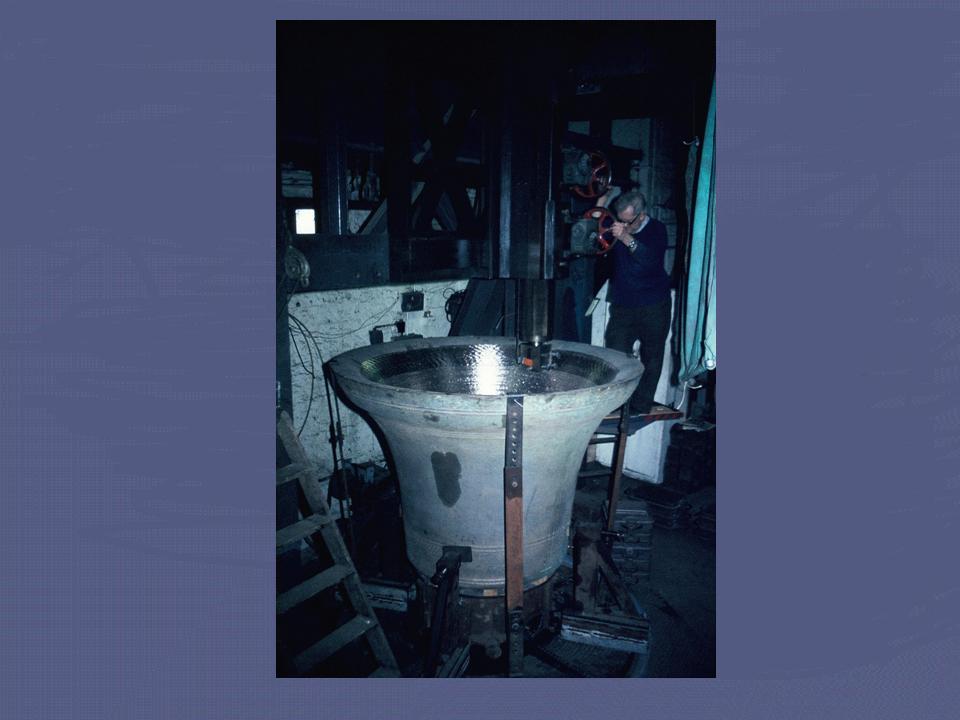
20th century tuning

In the 17th century, a bell founder in Holland, Pieter Hemony (1619 - 1680), discovered the art of 'harmonically' tuning bells by cutting metal of the bell's inside surface on a large lathe. This enabled him to alter the frequency of the individual 'partial tones' of a bell, thus bringing them into a musical relationship. So closely guarded was his tuning secret that it died with him, although some very fine examples of his bells are still in use in Holland today. The bell shown on the tuning machine in the photograph is Great Dunstan, of Canterbury Cathedral. This bell was cast in 1762 and weighs just over 3 tonnes. It had never previously been tuned, but was thick enough to be capable of being tuned to a high degree of accuracy.






